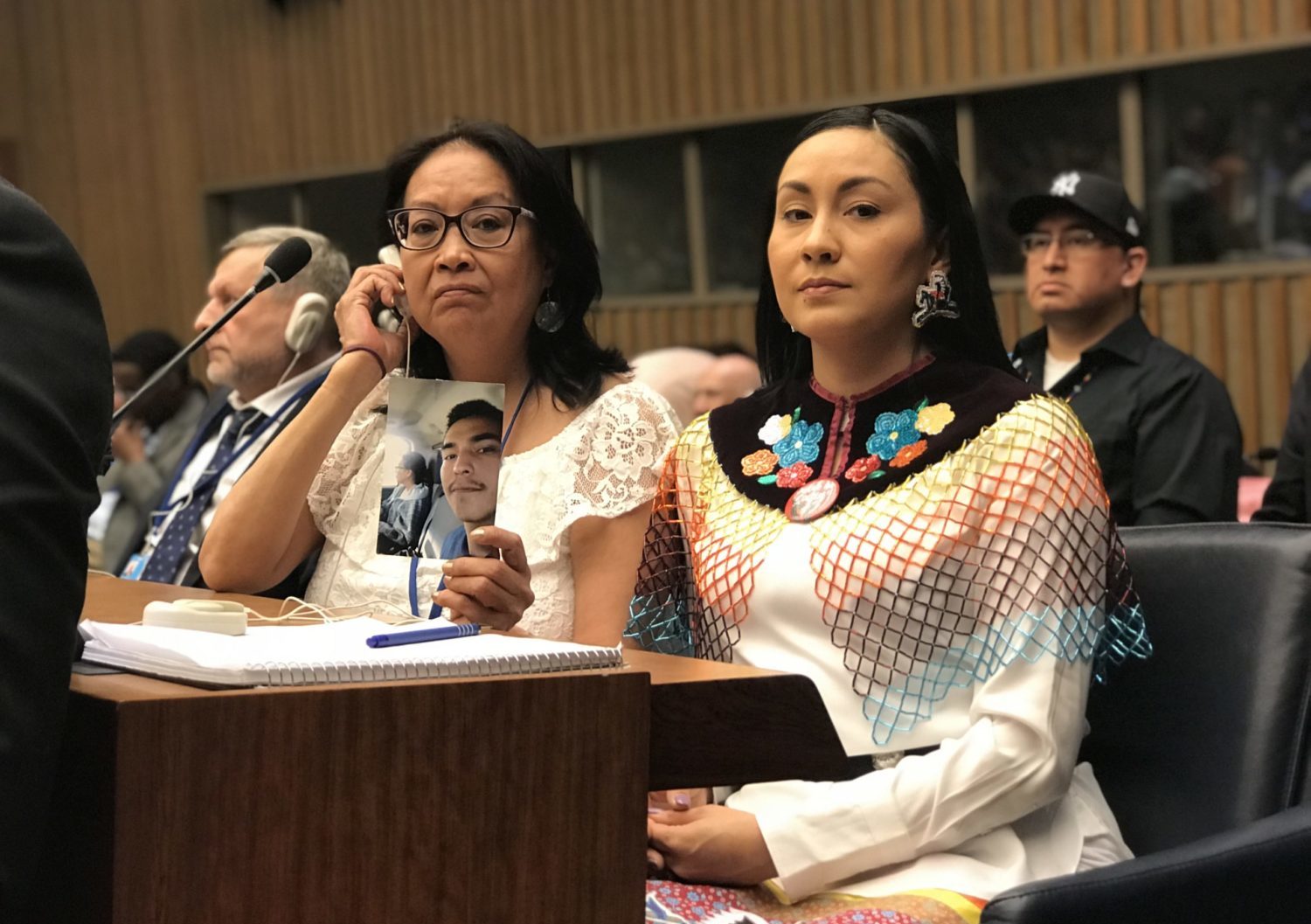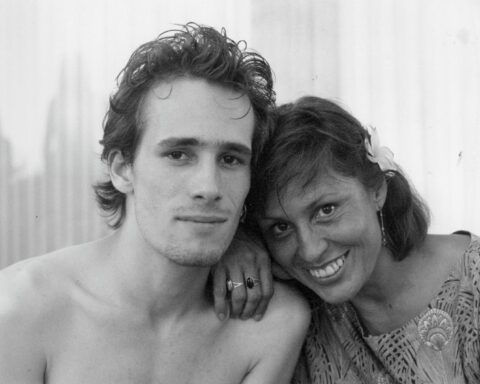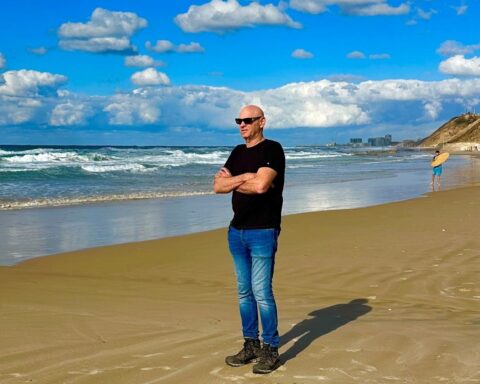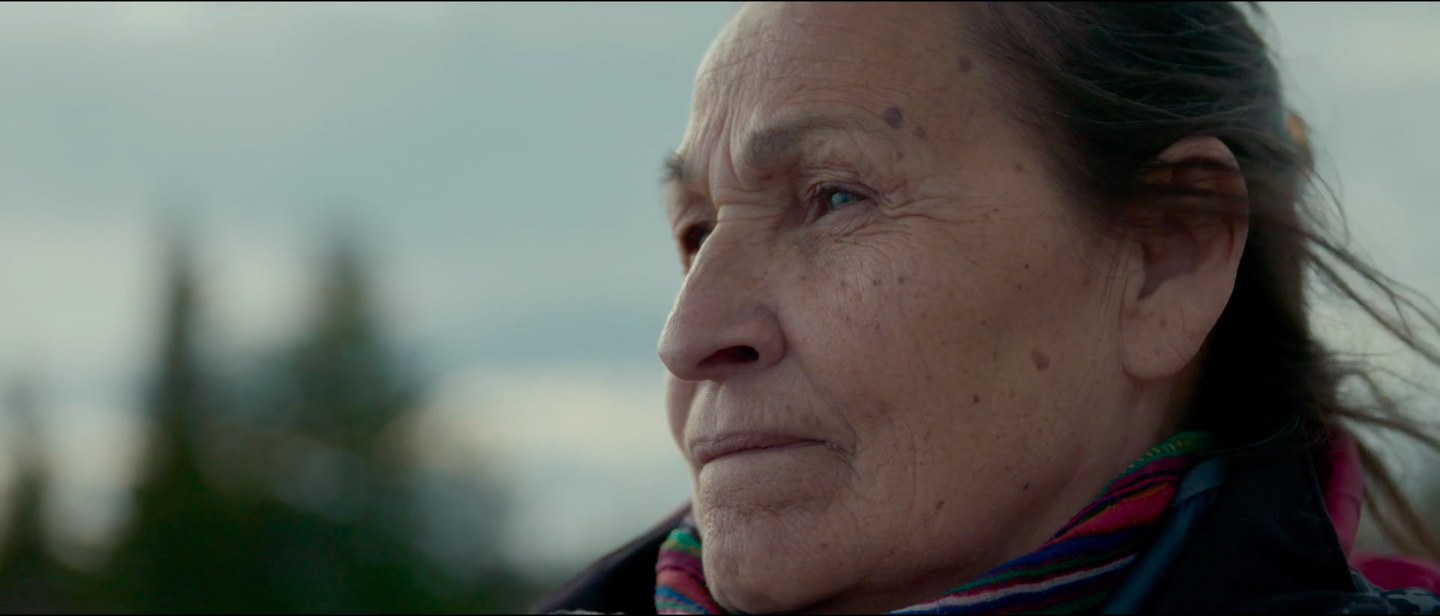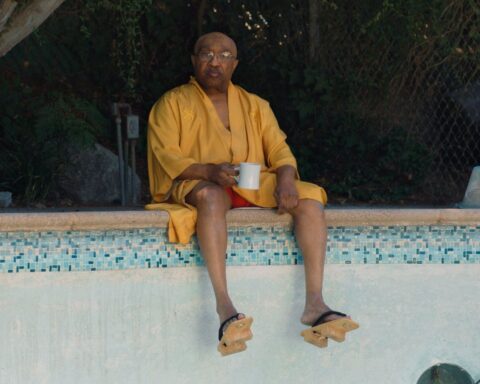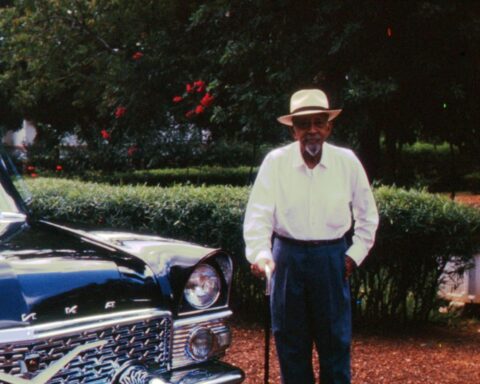The National Film Board of Canada (NFB) released its new strategic plan today following two exceptionally transformative years. 2019 saw the nation’s longest-running film institution pause the celebrations of its 80th anniversary when a sizable contingent of filmmakers, including several veterans and Oscar winners, released a rallying cry for change under the banner ONF/NFB Creation. The open letter prompted a year of necessary conversations and nation-wide town halls. The meetings brought executives from the NFB together with creators to discuss the role of artists in a changing landscape.
2020, on the other hand, brought COVID, a nation-wide lockdown, and an upheaval of the film-industry—and that was just from March to June. The summer of 2020 then brought a long-in-the-making cultural reckoning about the power of representation for artists and audiences who identify Black, Indigenous, and People of Colour (BIPOC). Coupled with the productive conversations prompted by the ONF/NFB Creation crew one year prior, the Board found itself in a unique position to forge its next path forward.
The NFB’s strategic plan for 2020-2023, titled New Ways of Storytelling for New Ways of Seeing, is very much a product of these seismic years. The plan puts creators at the forefront and responds to the concerns echoed throughout the industry and more broadly in all cultural organizations. There are concrete commitments for increased representation for BIPOC creators and female artists—two points at which the Board was already a leader in the Canadian industry following its success with gender parity and the Indigenous action plan enacted previously. Beyond filling positions to meet quotas and thresholds, however, the Board responds to the cultural pulse by re-imagining the ways in which films are conceived, produced, and released to audiences. These include action items ensuring a programming network that is “cohesive, integrated, and responsive”—of which efforts like the Indigenous cinema stream and COVID-19 series The Curve are obvious examples—and committing to offer a “creative environment that’s dynamic and inclusive.” Filmmakers should anticipate a more prominent role moving forward, while executives should expect to hear from them if they don’t.
The plan also calls for a new approach to distribution and marketing. This pillar of the plan is perhaps the most responsive to the changes ushered in by COVID-19 as the shuttering of cinemas and in-person events shifted the audiences to digital platforms, both for commercial releases and festival fare. A digital strategy is nothing new to the Board after a decade of releasing works online through NFB.ca, as well as pioneering interactive and virtual reality works with Highrise and Biidaaban among its notable successes. However, conversations with the NFB team speak to the need to use these digital platforms to reimagine audience engagement in the era of a “new normal” for the film industry. Where peak audience engagement may have been centralised to festival events in Toronto, Montreal, or Vancouver previously, the shift to hybrid and digital exhibition means that audiences in the regions can enjoy new levels of access. Again, it goes back to representation and inclusion.
The plan is ambitious and requires some quick and smart work from the Board to ensure the funds and partnerships that will help put the strategy into action do take place. Speaking with Claude Joli-Coeur, Government Film Commissioner and Chairperson; Julie Roy, Director of Creation and Innovation; and Jérôme Dufour, Director General of Distribution and Communications, POV learned how the NFB created its new strategic plan, the impulses that inspired it, and the steps needed to realise it.
Marc Glassman: Claude, tell us about your experiences traveling across the country for this survey. What was it like for you to feel the pulse of filmmakers across the whole country?

Courtesy of the NFB
Claude Joli-Coeur: It was essential that we had those town halls and individual meetings. I got a mixture of inputs. What we have in our new strategic plan is an answer to a lot of concerns raised by the creative community. After the strong reactions that we got from the media in the last 18 months, I personally felt that we needed to incorporate [that feedback].I could see the frustration about how we’ve been doing things over the last couple of years. Our idea is to give the creators [filmmakers across the country] a unique role in the strategic planning.
MG: Did you feel that there were common questions or concerns, among the filmmakers across the country?
CJ: There were a lot! One impression was that they [the filmmakers] were disconnected from the organization. Those [participating] filmmakers love the NFB and they have the good of the NFB in mind by bringing their criticisms to the forefront. Working with Jérôme [Dufour and in the last six months with Julie Roy], we incorporated as much input from the creators as we could [which changed how the strategic plan was envisioned two years ago]. That gap year between the last strategic plan and this one was really needed. And in a way, it was a gift because we were able to finalize the plan during COVID, which is shaking everything up. [Now] we were able to integrate the very difficult situation the creative communities are living [in]. You have all the creators struggling as freelancers, [who are] totally hit by the fact that everything had to stall [since March]. We saw that they have anxiety about their economic future and social future. [We know] what happened this year with the BIPOC movement. We had the chance to incorporate [all of] that while finalizing the plan, which would have been very different a year ago..
Pat Mullen: You developed this strategic plan during a year in which the film industry has seen significant changes with questions about what the “new normal” will be and if we will ever be able to return to the way things were before. Even last week, we got the news that Warner Brothers is changing its theatrical slate and doing day and date releases for some major films. How do you create a strategic plan when there is so much uncertainty about how the industry will look in the future?
CJ: We got back to the two axis in our law and mandate, production and distribution. We are reviewing how we’ll be programming and enhancing that production experience with the creative community while reinventing how we market, present, distribute. The shock that society received from COVID will change how we do things for sure.
Julie Roy: Obviously, it has an impact. It had an impact back in the spring. When COVID hit, we saw a sense of urgency. The producers felt that it was important to be there and fulfill our mandate by documenting what’s happening during this unusual time. We had, for the first time, a national initiative called The Curve. [An ongoing series of short films documenting life under COVID by filmmakers across Canada.] It was quite incredible. It was evidence from the production perspective to offer a voice to creators first. [The studios and producers] made sure that they could create [something new and relevant] during such a hard time. When you watch all those pieces of the mosaic, it’s quite unique that we can do something like that.
To link to what is written in the strategic plan, we talk about programming that is cohesive, but also responsive. We’re creating in that context. From a technological point of view, the NFB is always at the avant garde. We were able to equip filmmakers to make sure that they could create remotely because the NFB is always investing in technology. In one way, there was the lockdown and everything froze, but from our side, everything was accelerated to create projects that were not planned [before COVID].

Jérôme Dufour: The second strategic pillar of the plan is to reinvent how we market, present, and distribute our work. The traditional windowing [for film releases] has been evolving for the last three to four years. Now it’s accelerating, so we are part of that acceleration. For the last three years, we continued to push extensively on digital platforms. When COVID happened, we were already there. We were able to present new work on NFB.ca on a weekly basis to support all our projects during COVID. Since the beginning of the COVID period, we doubled our viewings on NFB.ca. That’s significant and demonstrates that NFB.ca will remain relevant for people to find auteur films, documentary, animation, and interactive work. NFB.ca was launched in 2009 and we’ve been growing our presence on digital platforms [since then]. The NFB has around 80 million views per year on our platform and across all networks—TV, public libraries, committee screenings, and digital platforms. That is huge. But we will always stay with our mandate of a public distributor and remain on traditional networks. It is important for us to go back to the communities as part of the public [exhibition program], and be in festivals because we want to preserve that connection between the public, the work, and the filmmaker. We do a significant number of public screening events per year: around 4000. Nobody else does so many in a given year across Canada.
Since the beginning of COVID, there was an increase of 58% of Canadians subscribing to more than three platforms. That’s significant. It’s not enough to release a film on a platform and make it a success. We need to be relevant, being on the right platform with the right content, and really understand the interests of our audience. Having the right content on the right platform in relation to the objective of that platform is one angle that will develop discoverability in the future. For example, on Amazon Prime, we have over 300 titles. But when you hit the right title, it represents millions of views. Just one title, Because We Are Girls [directed by Baljit Sangra] produced 18 million viewing minutes on Amazon Prime. [The film itself is 85 minutes.] We believe that we will still have an impact with traditional networks, such as festivals, but festivals today are doing hybrids. They enjoy being able to do in-person [events but also] grow their audience outside their local presence. I think they see the benefit of being digitized. That’s where we will play a big role as well.
MG: Julie, in this “new normal,” and even before this, I was wondering how the regions are affected. How are you able to communicate to the various regions, which all have their own producers. How are they able to work with you? Previous people in your position have brought in the producers regularly for meetings. How is this relationship working out now?

Photo: Yannick Grandmont/NFB
JR: Because we are all working remotely, it democratizes the process in a way. No group is more privileged [now] because none of us can meet physically in Montreal at the headquarters. For the strategic plan, I needed to work with executive producers across Canada. We organized the meeting by teams, with a simultaneous translation. That way, everybody was at the same place and there was no privileged group. Will we continue to work like that? We’re probably going to have a hybrid [structure]. We miss our informal discussions at the NFB [building] in the corridors but [that can’t happen anymore]. I have an executive producer, Annette Clark, in the Atlantic studio, who has a team in Montreal, Newfoundland and Halifax. She decided to organize a weekly virtual meeting to make the producers feel closer. It’s a bit frustrating because we have this new beautiful facility for our new headquarters in Montreal at rue Balmoral. Everybody arrived there in September, and there were installations to be finished, but then everybody had to leave the building. We have some animators that have started to work there again as do our people in technical services. But hardly anyone else. I’m quite impressed that we continue to make and launch films. We’re really, really busy at the moment.
MG: If Annette is doing that, is that also something being done by David Christiansen in Edmonton at the Northwest Centre, Anita Lee in Toronto at the Ontario Studio, and Shirley Vercruysee at the BC and Yukon Studio?
JR: We don’t have the choice. That’s the way we work. We are all doing that. Even myself, I started in my new position without having the possibility to visit my team in different cities. I started to work with Shirley and David virtually, so it’s going to be strange to meet them in person.
MG: Are you still going to bring in filmmakers from across the country to do their post-production in Montreal?
JR: Let’s talk about a case we had with the animation studio this spring. We were supposed to welcome two filmmakers from Denmark and then, obviously, they were not able to come to Montreal, but we did specialized post-production services remotely, like the colour correction part and the sound mix. This is something that we want to improve and offer to our studios outside Montreal.
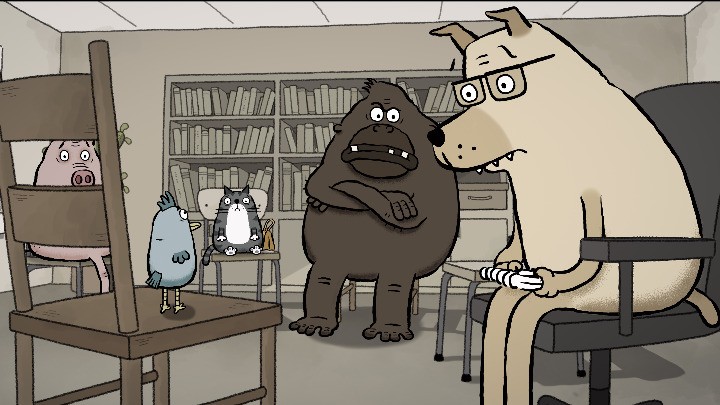
PM: I wanted to ask about some of the concerns with the ONF–NFB Creation group. One recurring thread they raised previously was the question of the loss of permanent jobs and the shifting compensation for creators. How does the new strategic plan address these factors, while also setting new standards for including more filmmakers in the field?
JR: Action number two in the first pillar of the plan, programming and creation, is to offer a creative environment that’s dynamic and inclusive. We want to build a positive place for creators and work on what I like to call the NFB experience. For example, we will implement a new annual programming forum in the coming months. This is where we will talk about what the NFB should produce, because the strategic plan is more the “how” and the framework. We would like to invite filmmakers to be there and to be part of the discussion to improve the intelligence and to benefit from what they have to say.
For example, we just finished a recruitment of my replacement as executive producer of French animation [Christine Noël]. We asked a filmmaker to be part of the recruitment committee. That experience was highly positive. Making sure that the filmmaker has a voice internally is the kind of concrete measure that we want, and it’s an ongoing process. Another example, someone at HR will be a point person for filmmakers to make sure that they can be heard. The idea here is to make sure that the filmmakers are part of creation and innovation, but also active with the other divisions as well. The question of compensation is also important. This is something that is happening around the bargaining table with the DGC, and AARQ, but it’s part of something bigger that I call “a place of creators and the NFB experience”.
PM: What else can you learn from the hiring process when filmmakers held a position?
JR: Nicolas Brault was the filmmaker who participated with us to establish the online interview format and to create the questions. It was interesting because sometimes there was a question that was not in my mind or that of Michael Fukushima [executive producer of the English Animation Studio]. We were really complementary, with one person from HR, one exec, one filmmaker, and me. Brault brought a lot to the table and I think it was quite satisfying for him because he understood a new facet of the NFB that maybe wasn’t obvious to him as a filmmaker, since the role of an executive producer is also to work with the high management. I think it was a rich experience for everybody around the table.
MG: You talk about “the NFB experience,” which I know can be fantastic, but can you talk about creating a balance in terms of the people that you would employ? You want to have new, young people, BIPOC creators but what about extraordinary veterans who have come back from time to time? How do you get a balance between having the older ones, and those who are emerging?
JR: In my previous role as an executive producer [in Animation], part of the challenge was to have a balance in my programming. It remains the same [in my new position], there are different institutional goals and objectives. As you see in the plan, the third action of the first pillar is programming and creation: value, diverse voices, and perspectives. We have an Indigenous action plan, and we will soon have a diversity plan. It’s important to have a place for diverse perspectives from a range of filmmakers to make sure the Canadian people can see themselves on screen. It’s part of our role and responsibility, to build a film crew that is linked to the [culturally diverse] diverse, or Indigenous, or women. The key word here is the same that you use, Marc, it’s “balance.” We find a balance, and, of course, we still have to—we need to—work with seasoned filmmakers. We need them to make sure that emerging filmmakers can be supported by people who know the NFB and can share their experience. This is part of what I mean by speaking about the NFB experience—it’s to make sure that all those people have a place and can benefit by working together. That’s essential.
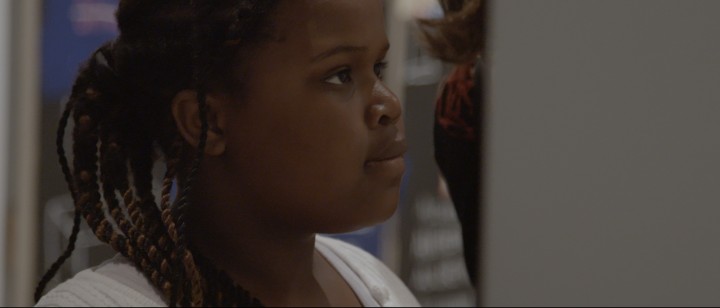
PM: We’re seeing a lot of the same conversations play out with Telefilm Canada and the debates going back and forth about representation and how different levels of filmmakers will have access to support. Have you been able to draw from those conversations while creating your own strategic plan?
CJ: I would say yes and no. Telefilm is really there to serve the industry. I’m on their board as well. I’ve been following that situation very closely. It’s interesting in terms of how we see the emerging diverse creators that didn’t have their place, and now how we see the place they want, and that they deserve. In our case, the fact that we produce and can target different creators lets us address those concerns with a proactive approach. That’s our advantage because we can be very agile in terms of orienting our programming, and that’s something that Julie and her team have within their overall framework.
MG: I remember the excitement around Balmoral and going to the Quartier des Spectacles, talking about it when I was at Côte-de-Liesse for that last year. The world shifted in a way that nobody expected, so how will this long-anticipated move now engage with an audience post-COVID?
CJ: It lasted six months, basically, because we moved in September, but in March, we were “kicked out” [by COVID]. We will be much more agile when we come back to the premises because they the technical equipment is state-of-the-art. But it will not take us a number of years to get the maximum in terms of working with everybody across the country. We have been able to implement it far quickly with the current COVID situation. The visionary of the move was Tom Perlmutter [the previous Commissioner]. At the time, he had a vision that it would not only be a building, but it would be a hub of creativity. I think even Tom would have never thought that we’d be working with creators across the country, the way we have been doing it in the last months, producing our films and putting everything online remotely, not even in our centres. It’s years of advancement.
When we go back, we will be able to push the creativity to another level. That hub will remain essential. But for me, it will be an NFB hub. It won’t be a Montreal NFB hub. The hub could be anywhere because it will be so interconnected with all our creative communities and our public around the world.
MG: What it would be like if we were in downtown Montreal and could actually walk into the Balmoral building?
JD: To build on what Claude said, we always saw the new building as a hub – a hub to build ideas, a hub to welcome creators, but also finally, a hub where we can meet with the public. Even though we live in a digital world, Balmoral is a big place [in which] to have different experiences, including live ones. It will remain part of what we do. We want to be in public spaces, like librairies, museums etc, and we feel that, moving downtown was in the spirit of creating a hub where you (the public) can meet , with filmmakers, with creative staff, because I do believe exchanges are essential for being able to better understand what we’re doing and to express, creatively, how we can evolve.
PM: If the NFB produces more works for digital distribution, does that affect costs? Does shifting to online distribution mean you can potentially make more films? How would you navigate the concerns of filmmakers who prefer the theatrical experience?
JR: It won’t affect the cost of the project, but it will affect the approach of the filmmakers. For example, if you want to launch on social media, you have to avoid the generic NFB opening, since the first 30 seconds are really important. It will influence the way you will direct your project, but I don’t see any impact on the cost. Some projects are created for the web first, and some are for multi-channels.
JD: Well, there’s a cost, of course, but it’s different from one to the other. We have documentaries, long and short format, animation. Most digital and interactive works are meant to be released directly online, or on special marketplace platforms. Animation is more traditional, with a specialized market where you find specific fans who are looking for that genre. The shift that we’re making in our plan is to be able to develop greater proximity between the work and the audience. Each work is strategized differently and will be deployed separately with each effort being made according to the format and how best to engage with its audience. You have to have the right curation. Each project will be worked differently, according to engagement paradigms. If it’s meant to be online, it will be made for online, but we will adapt by developing assets that work within one distribution approach or another. As for the more traditional, general public, we will still be in festivals, cinemas and public screenings, but again some festivals might decide to remain working as hybrids [in presence and online after this year]. This week, we will be releasing a documentary feature, but strictly online without cinemas because movie theatres are not open for the public. We will work with our partners to be able to make the right connections [for every new NFB work].
MG: I have a major financial question to ask Claude. This goes to the heart of some of the issues that have besieged you during your time as commissioner. It’s a matter of money and a long history of cutbacks to the NFB. I know that part of the disgruntlement by the group called Creatif is that they feel there isn’t enough money in production. That’s from their angle, but from your angle it’s still the same question: how do you put more money into your projects? How do you raise money? From the Federal government? Or from private/public partnerships?
CJ: That’s one thing that came up in the tour. We got it loud and clear, and the creators are right that the money allocated to production has been eroded over the years. They are right that [the erosion] not only has to stop, but also [money for productions] has to increase. That’s a commitment we have in the plan, to increase the NFB funding, to have more money in production. We are pleading that case to the government. We have been able to demonstrate why that erosion has happened. Basically, we had to put money into the digital shift [in production and distribution]. Currently, we are in a very tight situation with COVID, so we need to balance our budget. But the minute we balance it, from our internal funds, we will reorganize ourselves to increase production dollars without an increase of the funding from the government. That will mean a shift in terms of certain priorities to make sure we can enhance the production dollars. And on top of that, we are committing that if we get additional funding from the government, 50% of that funding will go to production. That’s a priority for me, for Julie, and our executive team. We’ll continue to do partnerships, continue to seek external sources of funding, but it has to go to the way we manage our funds to prioritize that.
PM: What do you feel most distinguishes this strategic plan from the previous edition?
CJ: The big difference from previous plans is it really places creation front and center. It’s the main focus. The last three strategic plans have established the relevance of the organization, but now it’s time to get back to the main two pillars of the NFB: creation and the public. It’s that interconnection that we will be building with the approach that we are taking. I think that’s the biggest difference.
JR: Claude said earlier that this strategic plan would’ve been very different if it had been published a year ago. This plan is anchored in what’s happening in the world at the moment. I think we are at the moment where we can create a real and sustainable transformation of the face of the NFB. I like the wording of the mot de commissaire: it’s “an urgent need to tell our stories.”
JD: I think it goes with the title of the strategic plan, which is ”New Ways of Storytelling for New Ways of Seeing.” What we’re seeing today is how critical it is for us as a society to reflect upon ourselves and understand who we’ll become. Environment, discrimination, and everything that’s around us [has to be reflected in the plan.] When Claude talks about “creation and the audience,” I think that’s really the spirit of it.
CJ: I think Grierson would be proud of us if he’s watching.
Read the NFB’s new strategic plan here.




